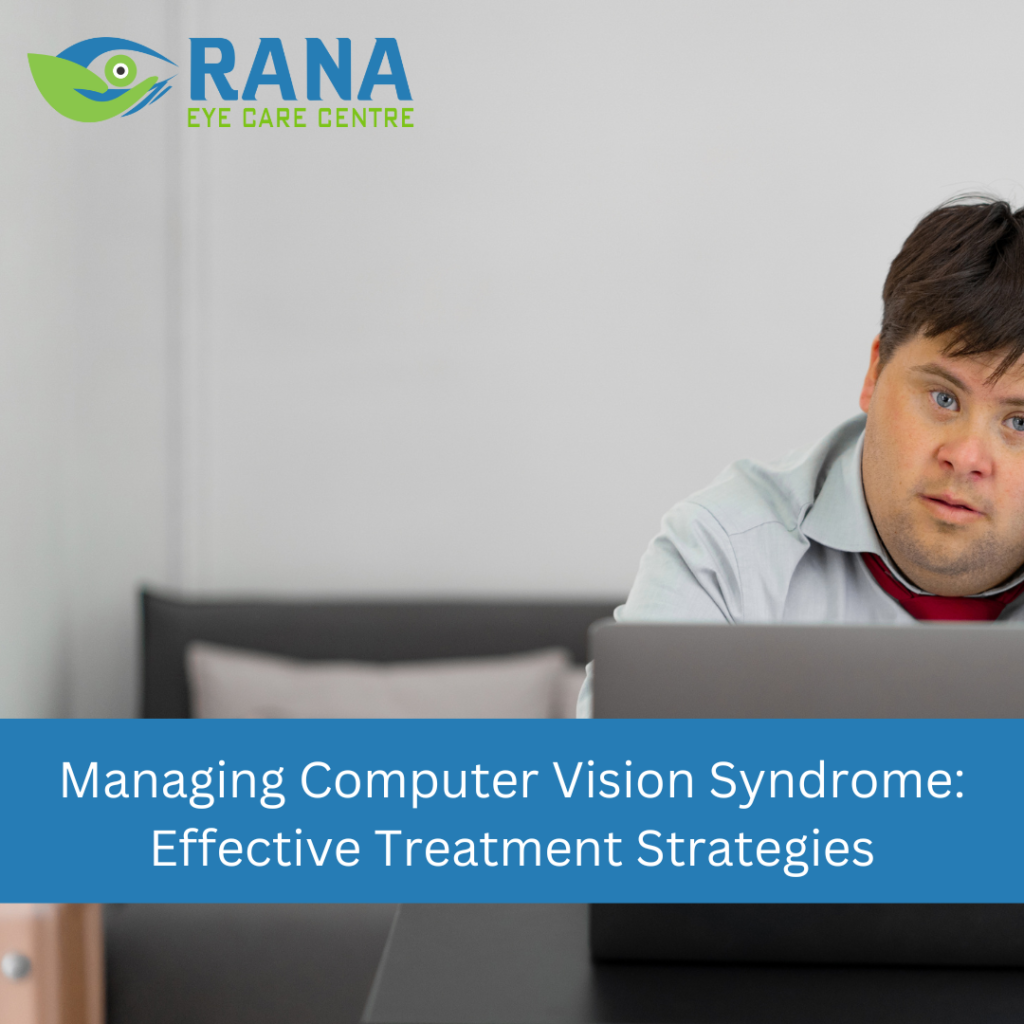Managing Computer Vision Syndrome: Effective Treatment Strategies
In the modern digital era, where we are more connected to screens for work, leisure, and communication than ever before, technology has undoubtedly greatly enhanced our lives. However, it has also given rise to a developing issue called Computer Vision Syndrome (CVS). CVS is a collection of eye and vision problems caused by prolonged digital screen exposure. If you’re one of the many individuals at risk, here’s how you can treat and prevent this increasingly common issue.
Who is at Higher Risk of Developing Computer Vision Syndrome?: If you actively work on digital screens, be on the lookout for these warning signs that make you prone to computer eye syndrome:
– Spending more than 3-4 hours on a computer, laptop, iPad, smartphone, etc.
– Keeping digital devices at the wrong distance (too close or too far) and angle.
– Poor lighting and glare or reflections on the screen.
– Improper posture while working on a digital device.
– Not wearing prescribed eyeglasses or contact lenses.
– Not taking screen breaks for hours.
If you resonate with these symptoms and risk factors, it’s essential to get yourself checked and follow proper eye care steps.
Treatment Approaches: When it comes to treating Computer Vision Syndrome, there are several effective strategies to consider. The first step is to assess your eye health and vision needs. Some individuals may not require glasses for everyday activities but might benefit from specialized computer glasses designed to reduce screen-related eye strain. Others may need anti-glare coatings or updated prescriptions to ensure optimal visual comfort during digital work.
Eye specialists often recommend specific lenses that cater to the unique requirements of our eyes during computer work. These lenses can reduce eye fatigue and discomfort associated with prolonged screen time. Lubricating eye drops can be prescribed to alleviate dryness and soothe tired eyes. These drops help relax eye muscles and maintain moisture, reducing the chances of redness and irritation.
Taking regular screen breaks is crucial for preventing and alleviating CVS symptoms. For every two hours of screen work, experts advise a 15-minute rest for your eyes. During these breaks, shift your focus to objects that are closer or farther away from your screen, and remember to blink frequently. Blinking helps keep the front part of your eyes moist with a tear layer, reducing the risk of dry eyes.
One effective technique is the “20-20-20 rule”: take a 20-second screen break every 20 minutes and look at something 20 feet away. This simple practice can significantly reduce eye strain and discomfort caused by continuous screen use.
Computer Vision Syndrome is a common issue for those who spend extended periods in front of digital screens. However, by recognizing the symptoms, understanding the risk factors, and implementing practical treatment and prevention measures, individuals can effectively manage CVS and safeguard their eye health in our screen-centric world. Remember, your eyes are precious, and taking care of them should be a top priority in the digital age.






No Comments